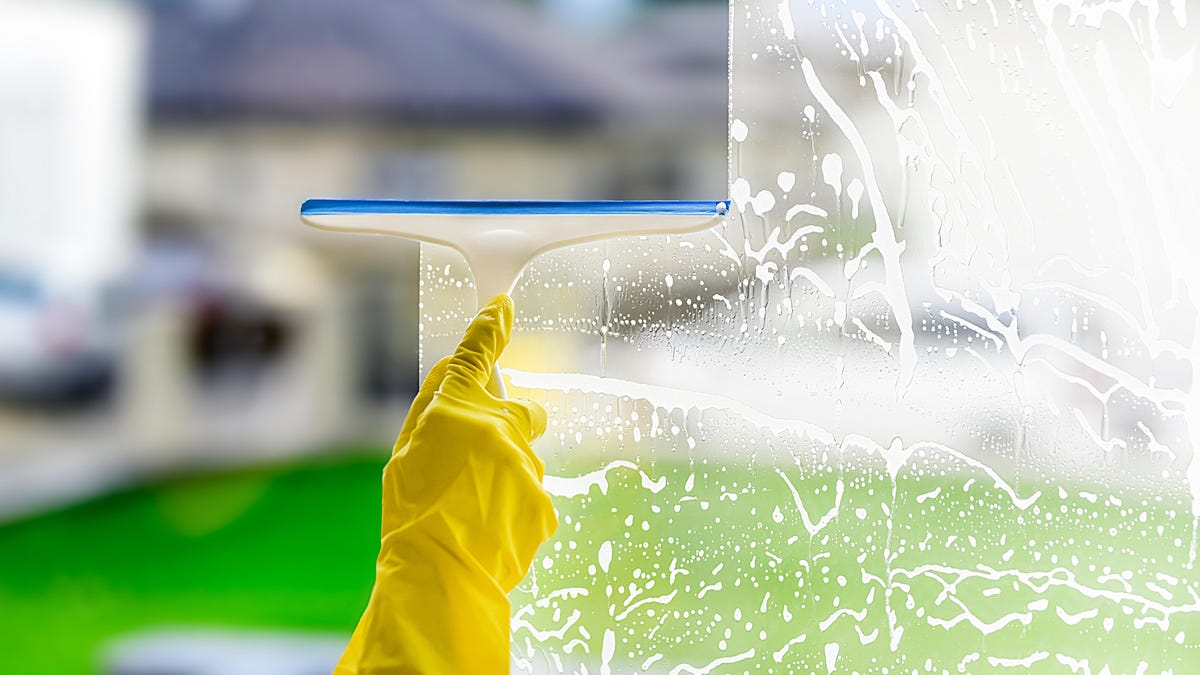Avoid These Common Window Cleaning Mistakes

It’s not just you: achieving streak-free, squeaky clean windows is harder than it seems. While a few spritzes of all-purpose cleaner and a quick swipe of a paper towel seem to get the job done, in most cases it requires more effort and other supplies. Of course, a lot depends on the size and location of the window (for example, indoors or outdoors, bedroom or bathroom, etc.), when it was last cleaned, and how dirty it is when you start. But generally speaking, here are some common mistakes to avoid when cleaning windows.
Choose a warm sunny day
Sure, the sun can make fingerprints and other smudges on windows easier to see, but it also causes the liquid component of window cleaner to evaporate quickly , leaving behind residue that can turn into streaks when wiped.
However, not everyone is able to wait for ideal weather for various household tasks. But if you have some flexibility, cleaning your windows will be easier on cool, cloudy days.
Neglecting dusting
Before you pick up the sprayer, start by using a clean, dry, low- or lint-free cloth (such as microfiber) to wipe away dust from the entire window. Get rid of as much dust and debris left on the surface as possible so that when mixed with the cleaner, they don’t turn into hard pieces of fluffy dirt.
Using the wrong cleaning product
Not all cleaning products provide the same streak-free results. According to the experts at Mill City Cleaning , you should choose a glass cleaner with a “low water content” to avoid residue that can cause streaking. It’s best to use a homemade solution (more on that below) or, according to Consumer Reports , dilute an ammonia-based glass cleaner.
Making your own cleaning products from hard water
There are many recipes for homemade window cleaners , many of which contain a combination of dish soap, white vinegar, and water . This solution really works, so if you’re not getting the results you want, it might be the water.
If you’re using tap water to make a cleaner and your water is hard , that means you’re putting dissolved minerals—the same ones that leave limescale on your faucets—on your windows as you “clean” them. Instead, source distilled water.
Wiping with the wrong utensils
Paper towels are convenient, but they tend to leave lint in the form of small paper fibers, adding dirt and dust to the window instead of getting rid of it. A much better option is a clean, dry microfiber cloth or other lint-free material. Alternatively, you can apply the cleaning solution with a damp (but not wet ) sponge and then remove it with a clean, damp scraper .
What about the newspaper?
Many of us were taught to use newspaper instead of paper towels or other rags or rags to clean windows because it is highly absorbent and does not leave streaks. Opinions about this long-standing hack are mixed: While some people still tout the benefits described above and praise the technique, others, like Brad Roberson, president of Glass Doctor , say it’s time to move on.
“Although this was a common method used in the past, newspapers were once much thicker than they are now,” Roberson told Real Simple in 2019 . “Today’s newspapers can quickly deteriorate when wet and leave newsprint stains on mirror frames and window sills, not to mention your fingers.” By the way, unless the newspaper uses soy-based ink, some of it will likely end up on your clean windows.